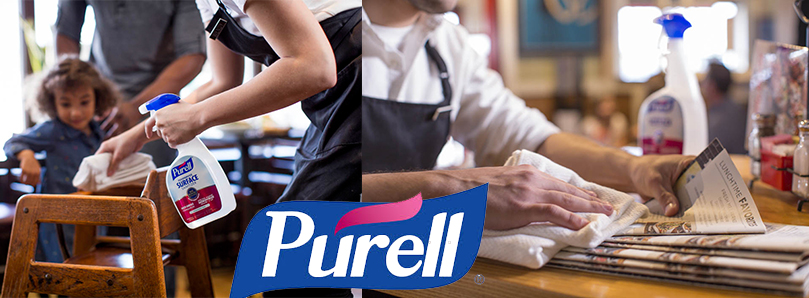Have you ever watched a cooking show and said to yourself, “I wish I was in a position to prepare such a meal”? It might be more times than you can remember. Eating the right foods is the first step towards leading a healthy lifestyle.
Essential Cookware for Trendy Recipes
You may have consumed a lot of content that suggests that you should avoid those foods with high cholesterol levels. You may have dumped processed foods, and junk may not exist in your diary anymore. However, you may not know that the type of cooking utensils that you select will determine the output. Selecting the right cookware is the first step towards healthy eating. Let us explore different types of cookware and what to expect.
Enameled cast iron
You can use this type of cookware to prepare all the trendy foods. Enameled cast iron utensils with lids are perfect for stewing, braising, roasting, and slow cooking. Enameled cast iron heats slowly but ensures that the energy is distributed evenly. The coating is also durable and can withstand high temperatures up to 500° F. The material does not react with acids and also does not corrode when exposed to minerals or salty water. The main disadvantage of enameled cast iron is that they can be a bit heavy.
Aluminum
It is one of the most common materials that you will find in kitchens today. Aluminum is an excellent conductor and also lightweight. The major disadvantage is that it is prone to staining, which distorts its appearance. It is also not the best type of cookware when preparing alkaline foods such as potatoes as it tends to discolor. The particles that get into foods may cause a sour taste. High mineral concentration, as well as some washing detergents, may make aluminum substances darken. However, you can opt for anodized aluminum that can withstand discoloration and darkening.
Stainless steel
It is hard to find a kitchen without stainless steel cookware. Uncoated stainless steel is the perfect choice for braising and browning. This type of cookware provides a rapid and uniform heating experience, which ensures that foods are evenly cooked. Stainless steel does not react with foods, which means that you can use it to prepare any type of meal. This type of cookware is durable and easy to care for as you do not require special cleaning detergents.
The main disadvantage of stainless steel is that foods tend to stick on its walls unless you go for that cookware with nonstick coating. Utensils from stainless steel can also discolor when exposed to high temperatures and also pits after excessive exposure to salty water.
Nonstick cookware
Just as the name suggests, your foods will not stick to the sides of such cookware. They are an excellent choice for people who are looking for low or nonfat dishes. Nonstick cookware releases delicate foods such as pancakes and eggs during cleaning. It is the best choice of cookware if you want to consume less fats for a healthy lifestyle. Nonstick utensils are made from different materials, but most of them can be used on any cooktop. Most of these utensils can withstand temperatures of up to 500° F, even though some handles are made of plastic. The major disadvantage of nonstick cookware is that you cannot use them with metallic spoons as you may scratch the coating.
Carbon-steel & blue steel
They a favorite for professional chefs as they are durable and efficient and designed for high-performance cooking. This material fits different types of cooktops. It is the ideal material for cookware such as omelet pans, crepe pans, and woks. However, these types of cookware are susceptible to rusting. Seasoning with a coating of oil is thus advisable after cleaning and wiping the utensils until they are dry. They are also not the type of utensils to clean in a dishwasher. Cleaning should be hands-only with water and soap.
Uncoated cast iron
It is one of the best materials if you are looking for something that can withstand high temperatures. You can brown meat using uncoated cast iron and still be safe for other uses. Cookware from this material keeps your food hot for a long time. However, cleaning uncoated cast iron is not the best experience. Some frying pans have proven to spread heat unevenly when preparing foods. This material is also prone to rusting unless you season with several layers of oil.
Read Also: Prepping Foods Outdoors, It’s Easier Than You Think! – F & B
Copper cookware
It is the type of cookware you can use to prepare any type of food. Think about gently simmering delicate sauces, frying, and sautéing to high-heat searing. It is one of the best choices of utensils if you are looking for the perfect kitchen-to-table presentation. The heavier models that come with brass or iron handles are usually safe even when using the oven. The major disadvantage of copper utensils is that they can be somehow pricey when compared to other materials. Copper is also highly reactive, but the modern pans come with non-reactive linings such as tin or steel. It is also not the type of cookware that you will clean in a dishwasher.
Quality kitchen utensils are at the heart of every cook as you may already know. A serious kitchen should have a variety of pots, casseroles, pans even special cookware. Experts in this field suggest that preparing food or even barbecuing does not have to be complicated. The following are some of the factors to consider when picking that cookware set.
- Your needs. Nonstick cookware is fit for someone who wants to fry different meals. On the other hand, stainless steel is what you go for when you want to do some browning.
- Your taste and preferences. Are you looking for something classy? Then copper cookware might be your best bet. The type of foods that you prepare will also depend on your tastes.
- Some kitchen utensils come with lids and handles. Ensure that you check the material that makes the handles as it will influence the overall cooking experience. The ideal material should be durable and safe to hold to avoid burns.






